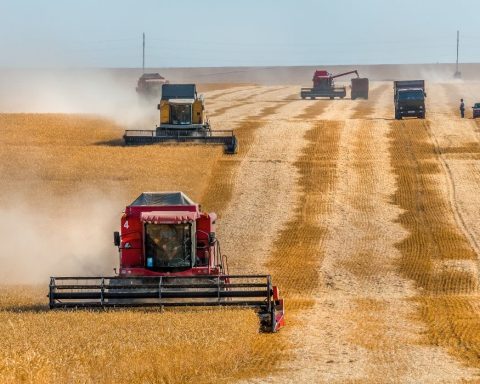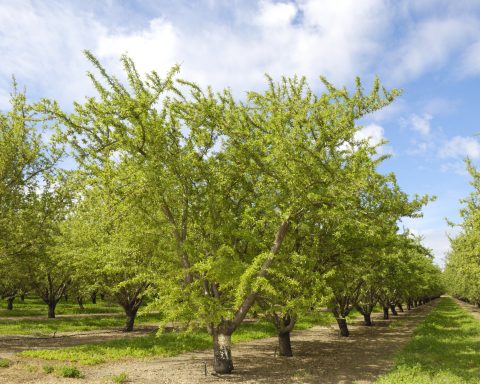At the border of India’s capital city, New Delhi, temperatures are soaring. As the heat inches above 40°C, farmers rallying against three agricultural reform laws passed by the government in November 2020 are still here, protesting. It has been more than six months since one of the biggest and most vibrant protests in human history began, but as a second, deadly wave of COVID-19 devastates the country, farmers are now battling the state with their lives on the line.
Prime Minister Narendra Modi claims that the contentious laws will bring much-needed private sector investment into a key segment of the economy – by loosening regulations that deal with the stocking, pricing and selling of produce. But dissidents maintain that it will only worsen their condition – eroding the safety that is guaranteed by minimum support prices (MSPs) for some crops and handing over more power to large agribusinesses.
Agriculture makes up 18% of India’s GDP and employs more than 60% of its population, most of whom are small, marginal farmers (owning less than five acres of land). As the climate emergency exacerbates an ongoing agrarian crisis the world over, these farmers’ livelihoods are increasingly at risk.
By not consulting the very people it purported to help, and by rushing the bills through India’s Parliament during the first pandemic-induced lockdown, the government has sown mistrust among its constituents, who are demanding the complete repeal of the new laws and a legal guarantee for the MSP system.
Implicit in the laws is a vision to follow the agricultural models of developed countries like the U.S. and Canada, both of which are dominated by large-scale, industrialized farming operations run by a declining number of farmers who are dependent upon heavy chemical and mechanical inputs. In India, this would mean opening the farm gates to corporate agribusinesses increasing production of cash crops at the cheapest prices, replicating the Green Revolution model of agriculture that relies on high-yielding varieties of seeds, large-scale use of pesticides and fertilizers, and monocropping. These methods, introduced in India’s fertile northern plains in the 1960s, are now widely known to be ecologically harmful. And the Green Revolution 2.0, as it’s being called, is not expected to raise farmers’ incomes (currently the equivalent of about $150 per month), despite the government’s 2018 promise to double farm incomes by 2022.
“The markets have failed everywhere in the world to provide farmers with assured prices,” says Devinder Sharma, an expert on global agricultural policy. “We cannot expect the same markets to do a remarkable job or be benevolent in India. The only way forward is to provide farmers with an assured income.” Indigenous farmers, peasants and agricultural workers in several countries – including Spain, Mexico, Indonesia and the Philippines – are also protesting a long history of policies that sideline them. This is a discontent that has been building over decades the world over.
In February 2021, after long months of being at odds with the government, farmers in Spain finally got a law enacted that prohibits the sale of food below the cost of production. This makes sense intuitively but rarely happens in the world of agriculture, where countries pump massive subsidies into their agricultural sectors to keep prices low.
“If Spain can do it, I think the rest of the world can also do it. If it violates the market’s supply and demand, so what? Markets can adjust,” Sharma says, citing the age-old business-community uproar against the movement for increased minimum wages. “But civil society and labour movements everywhere went on insisting, and today we have a minimum wage. So if we have a minimum price for farm produce, the market will adjust. We have done enough damage to farming populations across the world.”
Once farmers are assured of the support prices they need, they’re enabled to practise a more sustainable form of agriculture that remunerates them fairly and feeds people nutritious food. This could segue into climate-smart farming, but these solutions don’t make sense without the bedrock of assured income. Farmers aren’t likely to shift from growing water-intensive rice to more climate-resilient crops or embrace intercropping (mixing crop types rather than monocropping), no-till or more traditional climate-smart methods if the financial risks of changing their practices aren’t reduced.
As the second wave of COVID-19 overwhelms India’s health infrastructure with oxygen shortages and a slow vaccine rollout, too many lives have already been lost. Still, protesting farmers are staying put.
The world is watching.
In April 2021, at its annual convention, Canada’s New Democratic Party passed a resolution to stand with India’s farmers and condemn their government’s actions. Soon after, Vancouver City Council passed a motion urging the provincial and federal governments to speak out against the three laws.
It is time for the government of India, even as it is failing its citizens through this healthcare crisis, to do right by its food producers. “The government should take a policy decision at this time to keep these laws in abeyance or withdraw them, and assure farmers that if they go back, we will start afresh again,” Sharma says. A fresh start that centres on the dignity and right to a fair livelihood for India’s farmers.
Mukta Patil is a freelance journalist working in India and the U.S.





